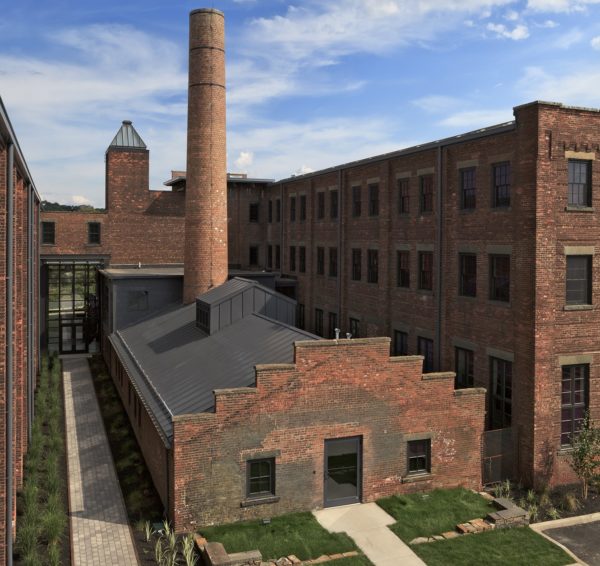The Rural Ulster Preservation Co. was joined by state and Kingston city officials last week at the grand opening of the Lace Mill, the nonprofit”™s 55-unit apartment complex for artists in a long-vacant and run-down factory in Kingston”™s emerging Midtown Arts District.
The $18.9 million affordable housing project restored for new uses the former United States Lace Curtain Mill at 165 Cornell St., a 112-year-old factory complex listed on the state and national registers of historic places. In addition to the live-work apartments for artists, the Lace Mill has 8,000 square feet of public gallery and meeting space, according to RUPCO.
The project was funded through various public and private sources, including grants from the city of Kingston, the state Homes and Community Renewal agency, nonprofits and Central Hudson”™s Main Street Revitalization Program, and $6 million in state and federal historic preservation tax credits.
RUPCO said New York state provided the largest project investment, including $9 million in Housing Finance Agency bond financing; $572,287 annual allocation of low- income housing tax credits; a $1.9 million Housing Finance Agency subordinate loan, and a $2 million Homes for Working Families subordinate loan.
“The Lace Factory was a key corner property in Kingston that had been vacant and derelict,” New York State Homes and Community Renewal Commissioner and CEO James S. Rubin said at the Aug. 14 grand opening. “It is now, once again, an important asset in the heart of the city.”
“With the completion of The Lace Mill, we are privileged to witness a shift forward in Kingston,” said James B. Childs, RUPCO board chairman. “What is most exciting is the anticipation of the ”˜ripple effect”™ that The Lace Mill will provide for the neighborhood and residents adjacent to this re-awakened area.”
Kingston Mayor Shayne Gallo at the ceremony congratulated RUPCO “for having the vision to invest in the adaptive reuse of an historic property to help provide affordable housing for artists, promote arts and culture and improving the community by addressing blight at a prominent corner of midtown Kingston which had been an eyesore for many, many years.”



















